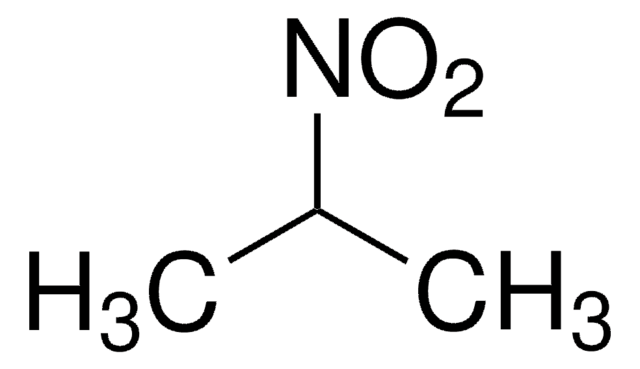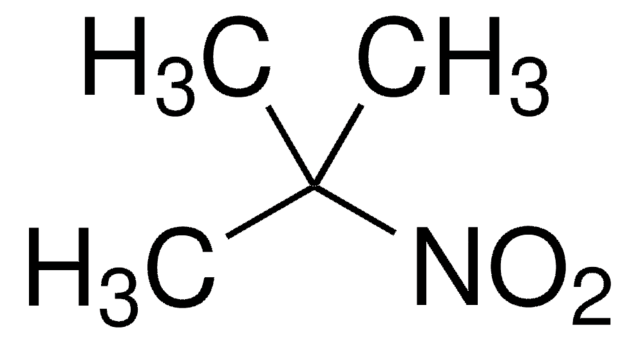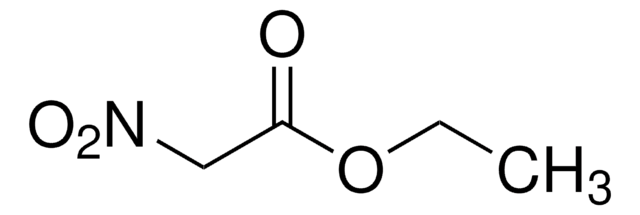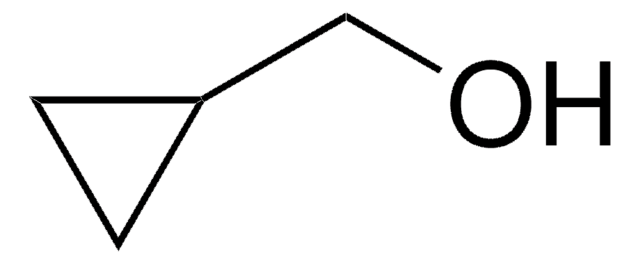146633
2-Nitroethanol
97%
Synonym(s):
β-Nitroethanol, 2-Nitroethan-1-ol
Sign Into View Organizational & Contract Pricing
All Photos(1)
About This Item
Linear Formula:
NO2CH2CH2OH
CAS Number:
Molecular Weight:
91.07
Beilstein:
1633753
EC Number:
MDL number:
UNSPSC Code:
12352100
PubChem Substance ID:
NACRES:
NA.22
Recommended Products
Quality Level
Assay
97%
form
liquid
refractive index
n20/D 1.445 (lit.)
bp
194 °C/765 mmHg (lit.)
mp
−80 °C (lit.)
density
1.27 g/mL at 25 °C (lit.)
functional group
amine
SMILES string
OCC[N+]([O-])=O
InChI
1S/C2H5NO3/c4-2-1-3(5)6/h4H,1-2H2
InChI key
KIPMDPDAFINLIV-UHFFFAOYSA-N
Looking for similar products? Visit Product Comparison Guide
General description
2-Nitroethanol is an effective crosslinking reagent for inducing scleral tissue cross-linking.It inhibits methane production during in vitro ruminal fermentation.
Application
- Unsuccessful synthesis of individual 1, 1-dinitroethene: Describes an attempted synthesis involving 2-nitroethanol, detailing the challenges faced in the process (Kras et al., 2024).
- Inhibitory Effect of Select Nitrocompounds and Chlorate against Yersinia: Examines the bactericidal effects of 2-nitroethanol and other compounds, comparing their antimicrobial activity (Latham et al., 2022).
Signal Word
Warning
Hazard Statements
Precautionary Statements
Hazard Classifications
Eye Irrit. 2 - Skin Irrit. 2 - STOT SE 3
Target Organs
Respiratory system
Storage Class Code
10 - Combustible liquids
WGK
WGK 3
Flash Point(F)
>235.4 °F - closed cup
Flash Point(C)
> 113 °C - closed cup
Personal Protective Equipment
dust mask type N95 (US), Eyeshields, Gloves
Choose from one of the most recent versions:
Already Own This Product?
Find documentation for the products that you have recently purchased in the Document Library.
Customers Also Viewed
Robin C Anderson et al.
Bioresource technology, 99(18), 8655-8661 (2008-06-10)
Ruminal methane (CH(4)) production results in the loss of up to 12% of gross energy intake and contributes nearly 20% of the United States' annual emission of this greenhouse gas. We report the effects of select nitrocompounds on ruminal fermentation
David C Paik et al.
Experimental eye research, 87(3), 279-285 (2008-07-12)
The success of riboflavin photochemical cross-linking of the cornea in treating keratoconus and post-surgical keratectasia has prompted interest in cross-linking scleral tissue with a potential application to stabilize myopic progression. Applying an UVA light source to the sclera is difficult
MiJung Kim et al.
Investigative ophthalmology & visual science, 55(5), 3247-3257 (2014-04-12)
The efficacy of therapeutic cross-linking of the cornea using riboflavin photochemistry (commonly abbreviated as CXL) has caused its use to become widespread. Because there are known chemical agents that cross-link collagenous tissues, it may be possible to cross-link tissue pharmacologically.
Our team of scientists has experience in all areas of research including Life Science, Material Science, Chemical Synthesis, Chromatography, Analytical and many others.
Contact Technical Service











